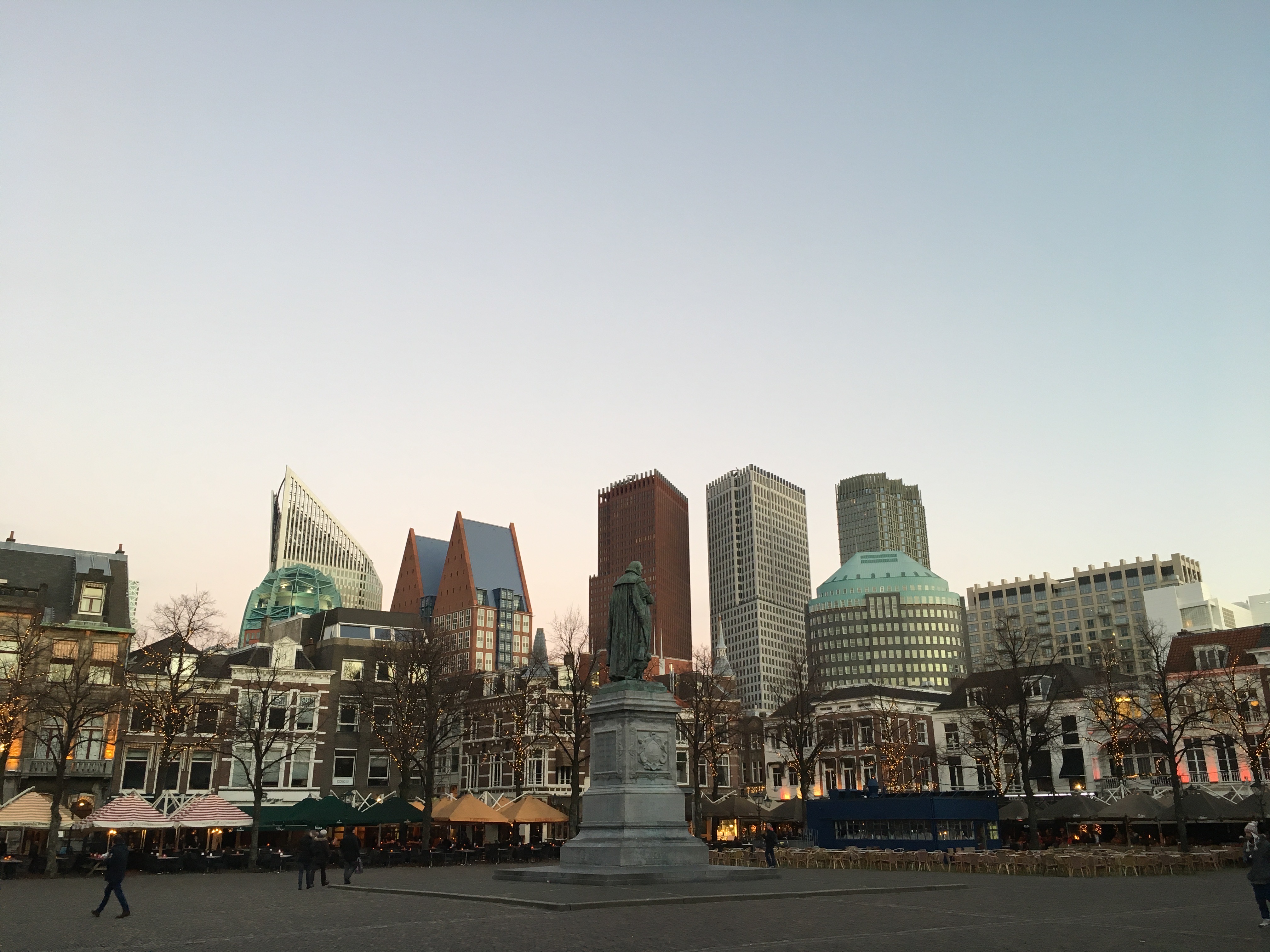Netherlands, The Hague
FC-01x Future Cities (Self-Paced) - Exercise 1 : "Making the Invisible - Visible"

Uploaded on 2017-02-27 by Joseph
This picture was taken last December at Het Plein (literally translated as The Square) in The Hague, Netherlands, just before it fills up in the evening with patrons of the various establishments. It is the closest major urban centre to where I currently live. I chose the picture for its depiction of what I view as the modern European urban setting, where the old seems to meet the new in harmony. It is a setting I am not accustomed to in my home city of Manila, Philippines, where unfortunately the demands of a developing country have often pushed the need to preserve architectural heritage to the sidelines. What we see in the picture is the square itself and the memorial to William the Silent (who led the Dutch revolt against the Spanish) surrounded by the low-rise buildings, cafes and restaurants in an old quarter of the city. Juxtaposed in the background is the modern commercial district of The Hague, with the high-rise buildings towering over the rest of the city. This visible information reveals the value for growth and progress while retaining a deep respect for traditional architecture and culture. Another very visible piece of information we see is the ubiquitous use of brick as a construction material, from the pavements in the square, sidewalks and roads to the facades of buildings in the historic centre as well as in the facade of some of the modern buildings. It is a sustainable construction material sourced from the country’s natural territory that has stood the test of time. It echoes the Dutch culture of practicality and pragmatism as well as highlighting the country’s early tradition of sustainable development. As The Hague continues to grow, as it is expected to grow in the next few years, it will face challenges to maintaining or improving its livability. The visible information gathered from the photo blending the old and new city reveals the various invisible pressures increased urbanization will have exerted, to name a few: 1. Environmental pressures a. Carbon emissions - How much additional heating and electricity is required for increasing number of commercial buildings? b. Pollution/PM Emissions/Waste management – With more commuters heading into the urban centre, how will the city cope with the increased PM emissions, waste? c. Impact of new developments on the old town – How will construction activities (drilling, boring, noise, etc.) impact the architectural heritage of the city? 2. Social & Economic Pressures a. Population Growth – How many more inhabitants can the city take to maintain its liveability? b. Foreign and domestic migration patterns – With the entry of new companies and jobs, what percentage of migration will come respectively from domestic sources and foreign sources and how will this affect social cohesion? c. Property valuation – What effect will urbanization have on the value of properties? How will factors of demand and supply come into play? How will expatriates affect property values? d. Life expectancy – With increased urbanization, what will be the beneficial or adverse health effects on the citizens. Of course, the various questions above would have already been identified by urban planners and related government units here. They would have most likely already collected the relevant data. For example, migration patterns into the city from foreign and domestic sources are gathered from data collected by the immigration department, local municipality/town hall registrations and city censuses. These could then be used to map out the demographics of the whole city or even per district. That information could then be used to develop programs to improve social cohesion such as integration programs, language classes and surveys to track well-being and get feedback from new inhabitants/migrants. Additionally, as part of a broader approach of extracting all the relevant information is to use it to develop a framework to involve various stakeholders in the public and private sector in the common goal of improving the livability of the city for the future.